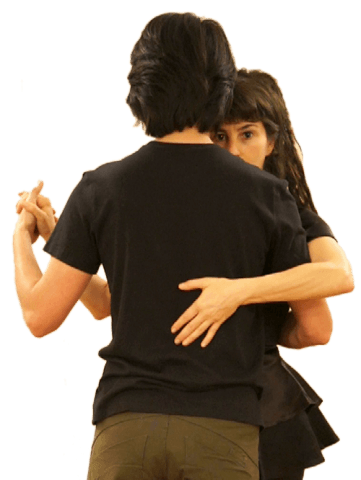Dietmar Schlabertz is a solo piano player hired to beautify and charm tea service and cocktail parties on luxury cruiseships. He plays classical pieces, film music, and some jazz standards.
In this interview he talks about two very different inputs to improvisation: the existing atmosphere in which he finds himself, and abstract challenges he sets for himself.
After playing for a long time it was boring only to play the pieces, so I started to improvise between the pieces.
 To challenge himself, he would start the improvisation in a different key than the song, and then work his way around the circle of fifths until he come to the song.
To challenge himself, he would start the improvisation in a different key than the song, and then work his way around the circle of fifths until he come to the song.
The neighbor keys are a little similar and you can change easily from one to another. But you don’t have to change to the adjacent one, you can also change 4 or 5 steps away. The farthest way is from 1 to 6. and that’s possible too.
I played with this modulation from one key to another. Then I collected all the ways you can use to come to the other tunes. I practiced during performances. So it became the character of floating music.
If the next piece is F major then I might start in C sharp minor. So I play a little bit in C sharp minor and then i must think about the way to change to F major. There are a lot of ways. But it’s very complicated to explain. You can take one chord and manipulate the chord so it becomes a chord from the next tune. There are a lot of possibilities. Every time I go from C sharp minor to F major i do it differently. C sharp minor has 4 crosses and B has one. So you must go from four crosses to three crosses to two etc. Or you can go around the other side. That’s the creative moment you must find or create a way. With practice you find your own ways to change. I decide in the moment. I play and look for the chord where I can change the tune. I stay a little bit in the tune and then I find the chord and realize I can manipulate it.
Most often I don’t go across or around the circle, I go back and forth.
I start and move around and then I decide to go to the song beginning. I am playful with it before I go there.
With a lot of practice, all the ways between the tunes can be very short. There are different ways, but you can make it very short. But that’s not so interesting. It’s more interesting if the way is the goal. The way is the interesting thing. It’s most interesting to make the way very slowly, to give the different chords more room and more changes, and not only to the targets, but a slow way.
At first when I started to do it like this. I only wanted to have time between to open the new piece. With time the improvisation grows, having its own character. It’s no longer an opening only.Now the improvisational part is only a little shorter than the piece after it.
This way to play makes the work a challenge.
He also improvises the contents of the set and with the atmosphere of the room.
I don’t play against the atmosphere of the room. When it’s very calm I play flowing, more lounge music. In a cocktail atmosphere, it’s more jazz standards and swing.
I asked him how to translate a room into a musical inspiration?
It’s connected with colors. You can play light colors or dark heavy colors with force.
For hundreds of years each tune was attached to “Affektenlehre” (The Doctrine of the Affections). H minor is a very dark and heavy tune. D major is very light. C minor is the tune of destiny. You can use all these effects to make the sound more interesting.
Look out the window. That’s a very specific light. You can play F major to this or E minor, which have the color of this sunset.














